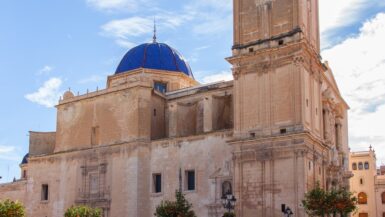As a UNESCO World Heritage site, the Palm Grove of Elche (or Palmeral as it’s locally known) is truly one of Spain’s most unique spots. With over 200,000 palm trees, it’s the largest palm grove in Europe and one of the largest in the world.
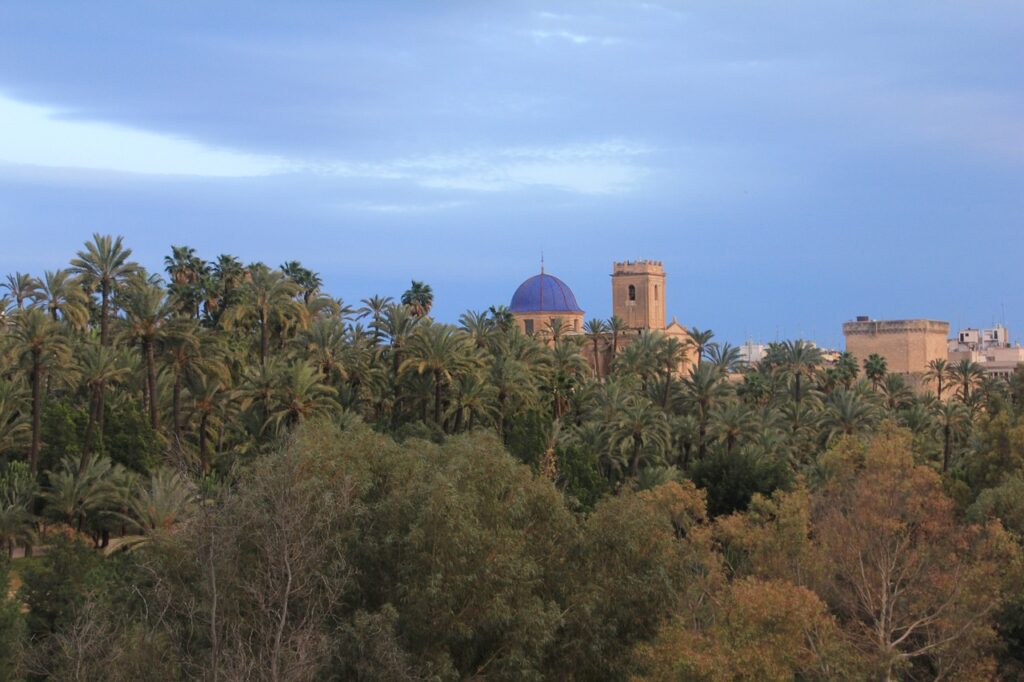
If you’re planning a trip to Elche or staying there, you absolutely must add this itinerary as its one of the top things to do in Elche!
What is the Palmeral of Elche?
The Palmeral is a massive collection of date palm orchards in the city of Elche. These palms have been here since ancient times, with the Romans first introducing water management techniques to the area. The major development and organisation of the palm groves happened during the Islamic period from the 10th century onwards.
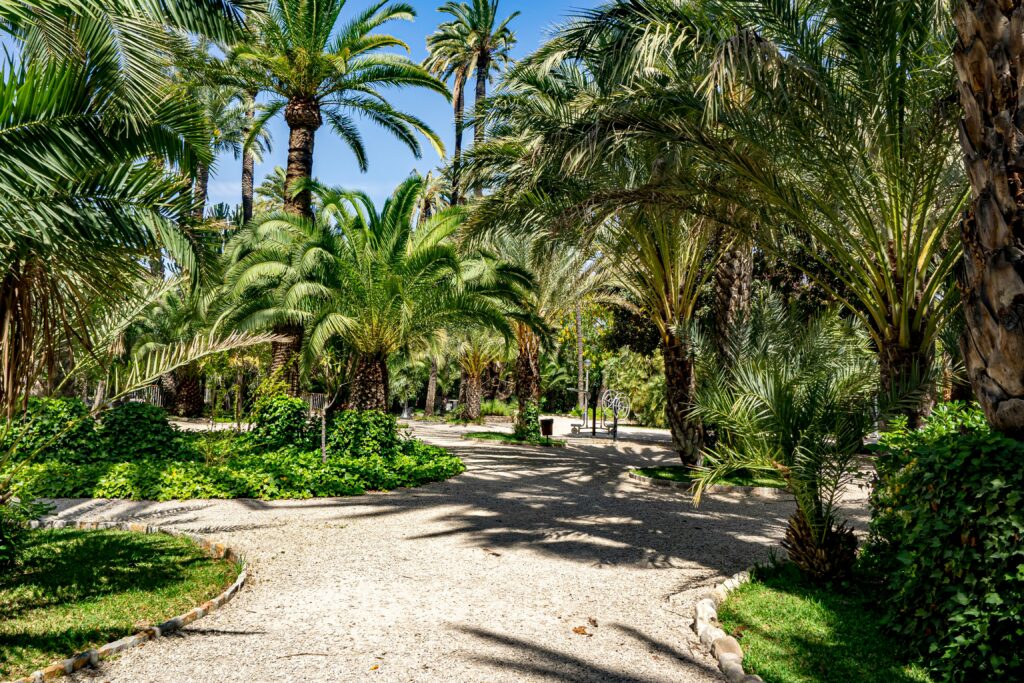
What makes it so mesmerising and beautiful is how the palms are arranged in an irrigation system dating back to the Arab period.
This ancient system still works today! The palms are planted in rows with irrigation channels running between them, creating small garden plots called “huertos.”
A brief history of the Palmeral
The story of Elche’s palm groves spans over a millennium. The Romans laid the groundwork with their irrigation expertise, but it was during the Islamic period in the 10th century that the Palmeral really took shape. The Arabs designed the huerto system – those rectangular plots with palm trees and irrigation channels – that you can still see working today.
After the Christian Reconquest, the new rulers recognised the value of what had been created and preserved these Islamic agricultural methods. Fast forward to 2000, and UNESCO designated the Palmeral a World Heritage Site, recognising its outstanding universal value.
The palms have always played a massive role in local life. Elche is actually one of the world’s main suppliers of white palm fronds for Palm Sunday celebrations, a tradition that continues to this day.
When to visit the Palmeral
You can visit the Elche Palm Grove all year round, but I’d recommend spring (April-May) or autumn (September-October) when temperatures are milder.
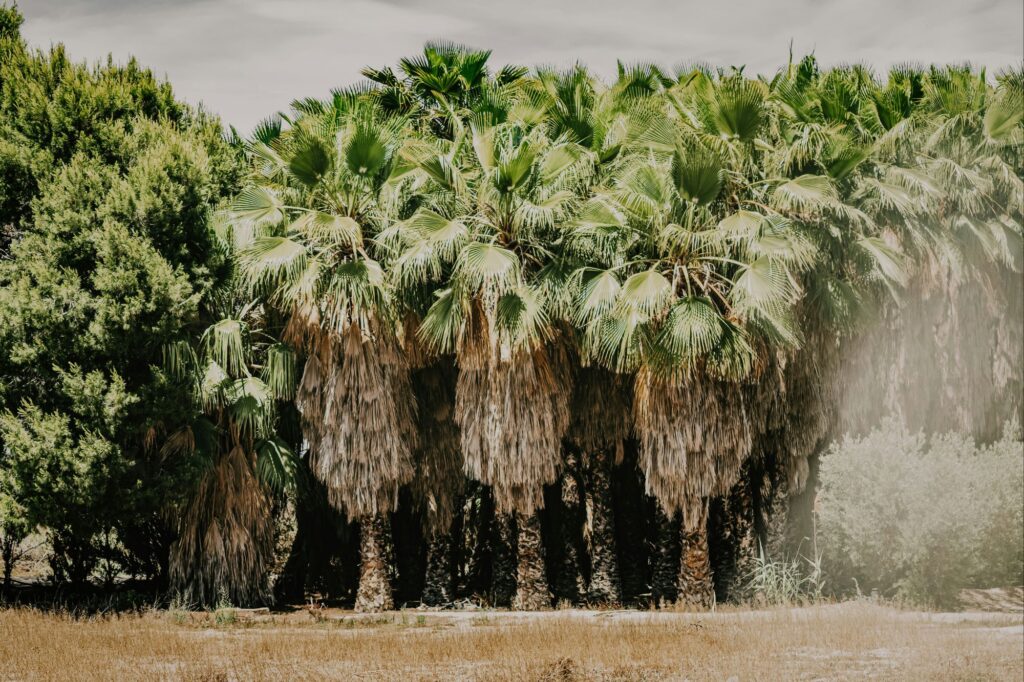
Summer in Elche can be quite hot, often reaching above 30°C, though the shade of the palms does offer some relief.
Winter visits are also lovely, with fewer tourists and the palms still looking magnificent. The palms don’t lose their leaves in winter, so the Grove looks fantastic all year!
How to get to the Palmeral
The Palm Grove isn’t just one place, but rather multiple gardens and parks throughout Elche. The main sections are:
- Municipal Park: The largest public section of the Palmeral
- Huerto del Cura: A stunning paid botanical garden within the Palmeral
- Route of El Palmeral: A marked walking route through various groves
Getting around the Palmeral
The Palm Grove isn’t just one place, but rather multiple gardens and parks throughout Elche. The main sections are:
- Municipal Park (Parque Municipal): The largest public section
- Huerto del Cura: A paid botanical garden
- Route of El Palmeral: A marked walking route connecting various groves
All the main areas are within walking distance of each other, and Elche is a very walkable city.
The Municipal Park has wheelchair accessible paths throughout most of the main areas, making it suitable for visitors with limited mobility. The paths are also stroller-friendly if you’re visiting with young children.
The Municipal Park (Parque Municipal)
This is the most accessible part of the Palmeral and it’s completely free to visit. I love spending an afternoon here, wandering among the palms and enjoying the peaceful atmosphere.
The park features:
- Beautiful walking paths lined with palms
- Children’s play areas
- A small pond with ducks and swans
- Outdoor cafés
- Regular cultural events and concerts in summer
It’s open daily from 7:30am until sunset. You’ll find entrances on Avenida Juan Carlos I and Paseo de la Estación.
Huerto del Cura (The Priest’s Garden)
This is my absolute favourite part of the Palmeral. It’s a paid botanical garden, but it’s well worth the entrance fee (around €5).
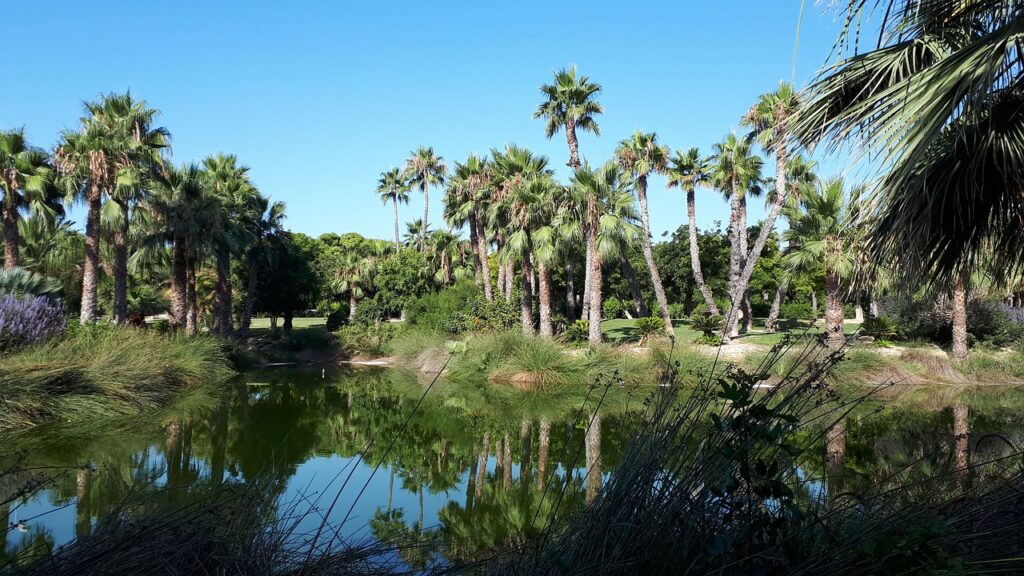
The star attraction here is the Imperial Palm (Palmera Imperial), a unique palm with 7 branches growing from a single trunk, named after Empress Elisabeth of Austria who visited in 1894.
The garden is meticulously maintained and features:
- Over 1,000 palm trees of different varieties
- Mediterranean and tropical plants
- Peaceful water features
- Beautiful mosaic paths
Opening hours are typically 10am to 5:30pm in winter and 10am to 8pm in summer, but do check their official website before visiting as these can change seasonally.
What to see in the Palmeral
Beyond just walking among the palms, there are specific things to look out for:
The cultivation techniques
Pay attention to the traditional farming methods still used in the Palmeral. You might see:
- Farmers climbing palms using traditional rope techniques
- Irrigation systems based on ancient Arabic methods
- Date harvesting (if you visit in autumn)
The date varieties
The dates of Elche are famous for their quality. The main variety is the “Datil of Elche” which is slightly smaller but sweeter than other Mediterranean dates.
If you visit in autumn, you might be lucky enough to see the harvest, and you can buy fresh dates at local markets.
The wildlife
The Palmeral is also home to many birds and small animals. Bring binoculars if you’re interested in bird watching. I’ve seen hoopoes, green parakeets and turtle doves among the palms.
Tips for visiting
- Wear comfortable shoes as you’ll be walking around a lot, the Palmeral covers a large area
- Bring a water bottle to keep hydrated, especially in summer
- Consider hiring a local guide to really understand the history and importance of the site
- Don’t miss trying locally grown dates
- Combine your visit with the Elche Mystery Play if you’re visiting in August
Where to stay
If you want to be close to the Palmeral, the Huerto del Cura Hotel is a fine option as its located within the Palm Grove itself.
Is the Palmeral worth visiting?
I can say it offers something truly different from the typical Spanish beach or city break.
The Palm Grove isn’t an attraction you’ll rush through – it’s a place to wander slowly, sit in the shade of ancient palms, and take in the amazing atmosphere of a living historical site.
Whether you’re interested in history, gardening, photography, or just want a peaceful green space to enjoy, the Palmeral of Elche delivers on all fronts.



